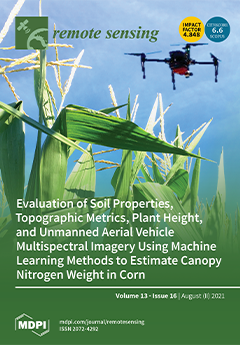Automatic cloud detection in remote sensing images is of great significance. Deep-learning-based methods can achieve cloud detection with high accuracy; however, network training heavily relies on a large number of labels. Manually labelling pixel-wise level cloud and non-cloud annotations for many remote sensing
[...] Read more.
Automatic cloud detection in remote sensing images is of great significance. Deep-learning-based methods can achieve cloud detection with high accuracy; however, network training heavily relies on a large number of labels. Manually labelling pixel-wise level cloud and non-cloud annotations for many remote sensing images is laborious and requires expert-level knowledge. Different types of satellite images cannot share a set of training data, due to the difference in spectral range and spatial resolution between them. Hence, labelled samples in each upcoming satellite image are required to train a new deep-learning-based model. In order to overcome such a limitation, a novel cloud detection algorithm based on a spectral library and convolutional neural network (CD-SLCNN) was proposed in this paper. In this method, the residual learning and one-dimensional CNN (Res-1D-CNN) was used to accurately capture the spectral information of the pixels based on the prior spectral library, effectively preventing errors due to the uncertainties in thin clouds, broken clouds, and clear-sky pixels during remote sensing interpretation. Benefiting from data simulation, the method is suitable for the cloud detection of different types of multispectral data. A total of 62 Landsat-8 Operational Land Imagers (OLI), 25 Moderate Resolution Imaging Spectroradiometers (MODIS), and 20 Sentinel-2 satellite images acquired at different times and over different types of underlying surfaces, such as a high vegetation coverage, urban area, bare soil, water, and mountains, were used for cloud detection validation and quantitative analysis, and the cloud detection results were compared with the results from the function of the mask, MODIS cloud mask, support vector machine, and random forest. The comparison revealed that the CD-SLCNN method achieved the best performance, with a higher overall accuracy (95.6%, 95.36%, 94.27%) and mean intersection over union (77.82%, 77.94%, 77.23%) on the Landsat-8 OLI, MODIS, and Sentinel-2 data, respectively. The CD-SLCNN algorithm produced consistent results with a more accurate cloud contour on thick, thin, and broken clouds over a diverse underlying surface, and had a stable performance regarding bright surfaces, such as buildings, ice, and snow.
Full article





